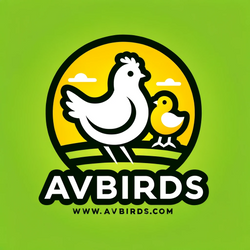Getting your live turkey housing requirements right sets the stage for a healthy, happy bird and a stress-free Thanksgiving in California. In this guide, you’ll find clear steps for space, brooder setup, ventilation, lighting, feeding, biosecurity, and permits. By the end, you’ll have a cozy home for your turkey from day one until dinner day.
Assess Space Requirements
Wondering how much room your turkey really needs? Proper stocking density keeps birds active, healthy, and free from stress.
| Stage | Age Range | Space Per Bird |
|---|---|---|
| Poult Brooder | 0–6 Weeks | 1 ft² (0.09 m²) Penn State Extension |
| Growing Barn | 6–14 Weeks | 3–5 ft² (0.28–0.46 m²) Agriculture Institute |
| Adult Finishing | 14+ Weeks | 7.75 ft² (0.72 m²) in deep-litter systems Agriculture Institute |
- Keep young poults warmed in a brooder at one poult per square foot.
- Move birds to a finishing barn or outdoor run once they hit six weeks.
- In semi-intensive systems, add 4–10 m² (43–108 ft²) of outdoor space per bird.
Set Up Brooder Area
A snug brooder gives poults a warm, draft-free start. You can choose whole-room brooding or ring brooding.
Brooder Temperature
Whole Room Brooding
- Start at 88°F (31°C–32°C) across feed and water space.
- Drop temperature by 5°F each week until 70°F (21°C).
Ring Brooding
- Under the heat source, 97°F–113°F (36°C–45°C).
- Edge of ring: 88°F–90°F (31°C–32°C).
- Check poult body temps of 103°F (39.5°C) to 104°F (40°C) on delivery and 12 hours later (Hybrid Turkeys).
Heat Source Options
- Pancake stoves give a circular warm spot.
- Radiant forced-air heaters reach farther but need good mounting.
- Always monitor behavior: huddling means cold, panting means hot.
Ensure Adequate Ventilation
Fresh air keeps ammonia low and birds cool, especially in California’s warm months.
Minimum Ventilation
- Use side inlets opened about 2 in (5 cm) for cold weather.
- Aim for 0.5 cfm per pound of bird weight (Penn State Extension).
Tunnel Ventilation
- Fans pull air lengthwise for strong wind-chill effect.
- Best for hot days to prevent heat stress (NC State Extension Publications).
Airflow Testing
- Do a smoke test to confirm air moves to the roof peak then down.
- Adjust inlet positions for a uniform environment (Aviagen Turkeys).
Provide Proper Lighting
Good lighting boosts growth and natural behavior in your turkeys.
Initial Light Spectrum
- Use 5000 K full-spectrum bulbs for the first two days.
- After day 2, lower intensity to around 10–20 lux to encourage feeding and rest (HATO Lighting).
Long-Term Lighting Tips
- Provide warm white (3000 K) light during finishing to mimic sunset.
- Keep 12–14 hours of light each day for growth without overstimulation.
Arrange Feeding And Watering
Easy access to feed and water prevents competition and supports uniform growth.
Feeder Space
- Offer at least 2 in of feeder space per poult in brooder.
- Increase to 4–6 in per bird in the finishing barn (Penn State Extension).
Waterer Space
- Start with 1 in of water trough per poult.
- Move to nipple drinkers or bell drinkers offering 0.5 gal per 10 birds.
Feed Recommendations
- Use pelleted, multiphase diets for efficient conversion.
- Always keep feeders and waterers clean and full.
Implement Biosecurity Protocols
Protecting your flock from disease means fewer setbacks and better performance.
Limit Visitors
- Post signs and keep gate locked.
- Allow only essential staff.
Protective Clothing
- Wear clean coveralls, gloves, and hair coverings.
- Provide boot baths at entry points (USDA APHIS).
Cleaning And Disinfection
- Remove organic debris before disinfecting.
- Rotate disinfectants and plan litter disposal (The Poultry Site).
Disease Surveillance
- Check birds daily for signs of illness.
- Keep records and isolate any sick animals immediately.
Secure Permits And Regulations
Raising live turkeys in California means following state and local rules.
California Requirements
- Review zoning laws for live poultry.
- Check local ordinances on flock size and noise.
Permit Process
- Apply for a small-flock permit if required.
- Renew permits annually and keep documentation on site.
For details on regulatory steps, see live turkey regulations in california and live turkey permits for thanksgiving.
Final Checklist
- Confirm space per bird at each growth stage
- Set brooder temps from 88°F down to 70°F
- Test ventilation with a smoke test
- Install 5000 K bulbs then switch to 3000 K light
- Provide ample feeder and drinker space
- Enforce visitor limits and disinfect regularly
- File all necessary permits on time
You’re all set to raise a thriving turkey for Thanksgiving. Got a favorite housing hack or a question? Share your tips below or explore raising live turkeys for thanksgiving for more help. For info on turkey poults and hatching eggs, check out avbirds.com’s guide at https://avbirds.com/turkey-poults-and-hatching-eggs, and for breed and dining tips visit https://avbirds.com/thanksgiving-turkey.
